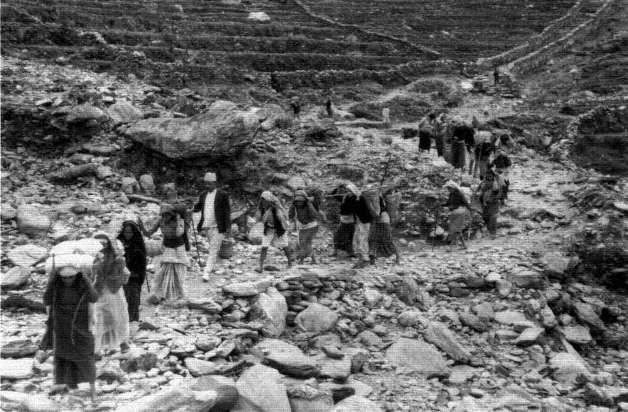Symbolized Space Beyond the City
The symbolically marked spaces we have been considering have as their maximal area the bounded city, placed in contrast and relationship to a "dangerous" outside. The great majority of symbolic enactments during the course of the year concern the city and its bordering outside and its subunits. But the hinterland of Bhaktapur (once part of the kingdom of Bhaktapur), the Kathmandu Valley itself as the ancient seat of the Newars, the larger modern Nepal, and the Hindu homeland of India, are all full of significant shrines and sacred spots and mark out significant space beyong the boundaries of the city. Many of these have little contemporary use, but some of them still concern the people of Bhaktapur in visits, pilgrimages (see fig. 9), and attendance at great religious fairs or mela s. In these encounters the Newars of Bhaktapur join with Newars of other cities, with non-Newar Nepalis, or with Indian Hindus
Figure 9.
Outside the city. A group of Nepalis on a pilgrimage to a mountain shrine.
to celebrate solidarities beyond that of the city. We will return to these in our discussion of symbolic enactments in later chapters.
Gutschow (1979a , 27-65 passim), Slusser (1982), and others have argued that some of the shrines and temples in the Kathmandu Valley trace mandalic[*] patterns characterizing the larger Valley. Gutschow and his associates have also found what they believe to be evidence for a mandalic[*] structure extending beyond its boundaries within which Bhaktapur is centered, as suggested by certain schematic paintings of the city as a manda[*] (Kölver 1976; Auer and Gutschow n.d., 38; Slusser 1982, 346). These structures may possibly have had general or much more likely esoteric speculative meaning in the past but have now lost contemporary popular or esoteric significance.
